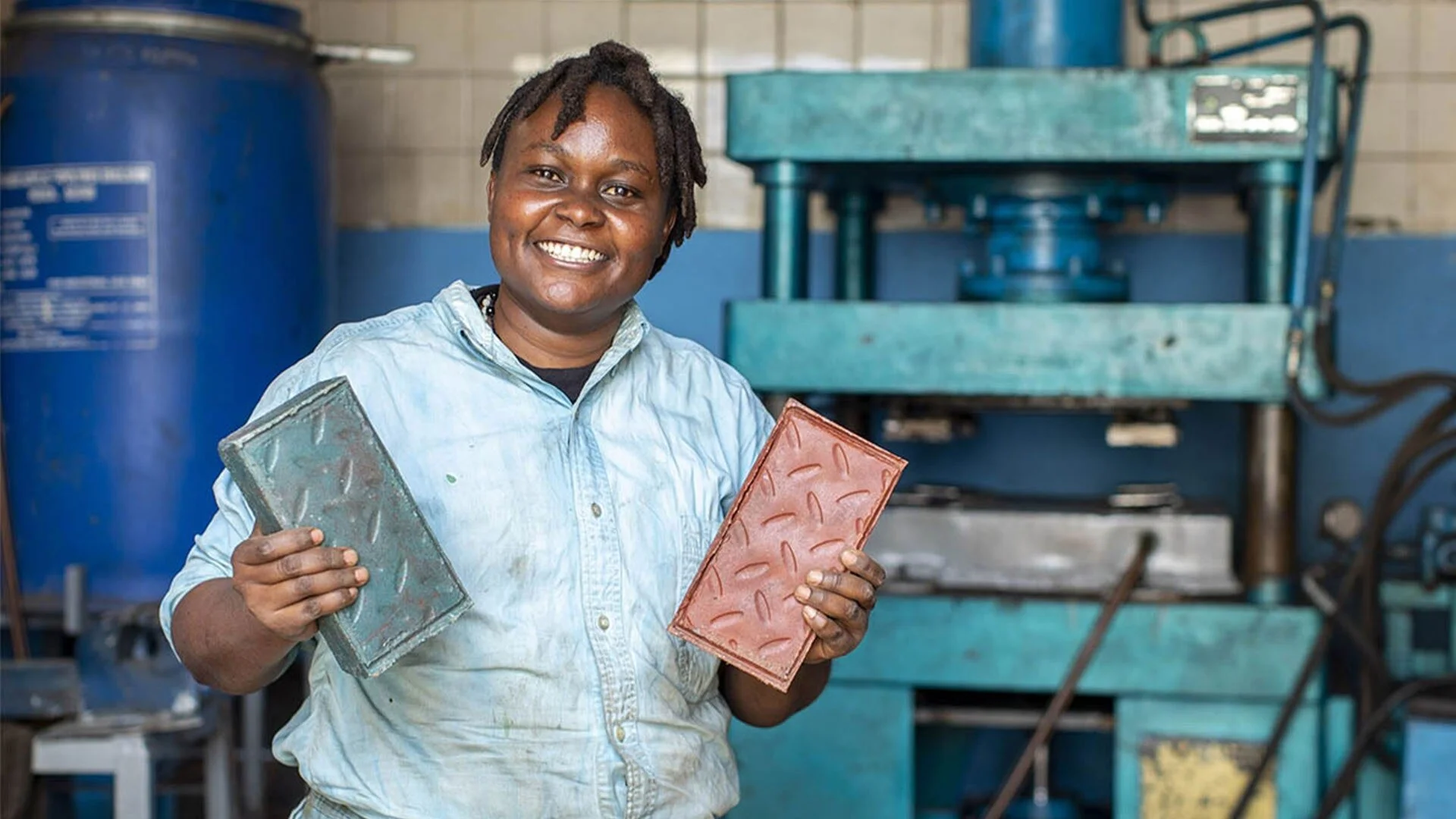Mutual Energy of Intention
Two stories caught my eye in the past week’s news cycle that I felt worthy of sharing because they spoke to intentionality beyond self. One was of a well-known personality using her fame and influence to help women, and the other, an unknown woman using her ingenuity to help her community and city.
The sight of a river of plastic garbage where the actual river was supposed to be, was shocking—people were actually walking on it. The 500 tons of plastic tossed away every day, in addition to the plastics that the US sends there, fill the river and Nairobi’s landfill. Nzambi Matee, a Nairobi-based 29-year-old entrepreneur, engineer, and inventor felt compelled to do something about it. Experimenting in her back yard, Nzambi created a machine to make paver-like bricks out of plastic and sand. It took nine months to create one brick—then triumph! Her company, Gjenge Makers, has turned 20 tons of trash into bricks that are stronger than concrete. She has employed 110 workers and her machines make 1500 pavers a day that are currently used to pave pathways and dirt roads.
Saying that “Plastic waste is not just a Kenya problem, but it’s a worldwide problem,” Nzambi’s intention is to salvage 50 tons of plastic next year, creating building blocks for housing and providing more jobs for her fellow citizens.
With the intention of mentoring women, who, because of the pandemic, had to leave the workforce, Meghan Markle created an initiative for her 40th birthday she calls 40x40. She has asked 40 of her celebrity friends to mentor a woman in need for 40 minutes with the hopes of creating a global ripple effect to help women trying to get back into the workforce. With millions of women around the world currently jobless because of COVID, Markle says “'time is among our greatest and most essential gifts, especially time spent in service to others knowing that it can contribute to incredible change.“
The intentions of both women can serve as a catalyst for a mutual energy of intentionality towards a higher purpose. The post below is a compilation of excerpts from two of my previous posts about intention and intentionality.
Intention Deficit Disorder
Spiritual leader Michael Beckwith says that people suffer from an “intention deficit disorder”—they simply don’t have an intention. Every day people are pulled by circumstances, he says, where the circumstances and conditions dictate how they’re going to react moment by moment. This does not serve us. When you establish an intention, you take your life back because intention is a directional focus of energy, a force field.
When you have intention, it means you have an interest in becoming more of yourself, in activating your spiritual potential, creativity, and resourcefulness. It opens you up to obtaining thoughts of inspiration around that intention, and you become impervious to other thoughts that can't match the frequency of your intention. So, in effect, your intention protects your consciousness.
—Michael Beckwith
Conscious cultivation and application of thought-energy, as intention, is a powerful agent for self-transformation.
Activating Intentionality
A New York Times article once compared our lockdown to a caterpillar’s cocoon, and pointed out that the wonderment about such metamorphosis is usually about the before and the after – not the in-between or liminal. Dreadful as it may seem, the caterpillar breaks down its form until only cells, called imaginal discs, remain. These cells use the protein left from the caterpillar to form the exquisite butterfly. The intention of this break down is transformation.
This is our break-down moment to birth something new, something better. It is through this intentional force field of energy that new leaders and voices are taking shape and arising. Intentionality, a directional focus of energy, is deliberate and purposeful with a high-level capacity to give meaningful context to our thoughts and behaviors.
With our value system at work and a goal or purpose in mind, our direction becomes intentional—not by chance. Our direction is meaningful because it’s based on something. We can assess the options, the possibilities, and the capacity to choose from them. This capacity is a state of being framed by our self-awareness and ability to shape and change ourselves, and the future, in relation to each other. A sense of responsibility, grounded in cultural values, can frame the intentionality of our paths. MIT lecturer and author Otto Scharmer frames this as moving “from an “ego-system” focused entirely on the well-being of oneself to an “eco-system” awareness that emphasizes the well-being of the whole.“
We can ask:
What intentional truth am I activating?
What are my organizing principles and values that will lead to and sustain beneficial change?
In jazz, this place of knowing comes through a practice we call Your Sound– establishing the style, approach, and consistency of your voice—which makes you unique. That is a key part of the experience shared with the audience.
Our presence—how we show up, what people recognize us for, and the impression we leave people with—defines our authentic self. It is from this place that we can step with intentionality into our emerging futures.
This poem by Rainer Maria Rilke frames it beautifully:
Fear Not The Strangeness
You must give birth to your images
they are the future waiting to be born
Fear not the strangeness you feel.
The future must enter you long before it happens
just wait for the birth
for the hour of new clarity
― Rainer Maria Rilke
Leading with intention is deliberately doing better and being better through courage, empathy, and collaboration.
What is your intention?




